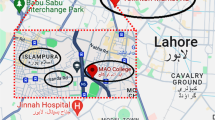Abstract
Hair samples of 655 children (3–6 yr of age) from metropolitan and small cities in Korea were analyzed to determine the content of 23 minor and trace elements with the aim of assessing reference values. Fifteen essential elements (Fe, Zn, Cu, Ca, Mg, Mn, P, Na, K, Cr, Se, Li, V, Co, Mo) and 8 harmful elements (Pb, Al, Hg, As, Cd, Ba, Bi, U) were taken into account. Measurements were performed by inductively coupled plasma-mass spectrometry. The overall mean values were as follows (μ/g): Al, 8.78; As, 0.11; Ba, 0.32; Bi, 0.04; Ca, 212.47; Cd, 0.08; Co, 0.01; Cr, 0.47; Cu, 15.51; Fe, 12.62; Hg, 0.49; K, 34.10; Li, 0.01; Mg, 12.29; Mn, 0.29; Mo, 0.07; Na; 27.14; P, 121.21; Pb, 1.68; Se, 0.75; U. 0.04; V. 0.08; Zn, 69.99. There was no significant difference in hair mineral content between children living in metropolitan and small cities. There were positive correlations between age and the level of Zn, Ca, Na, P, Mn, and Li, but negative correlations between age and the level of Cr, V, and U. The proposed reference values for hair Zn, Mg, Ca, As, and Cd of Korean children were lower than those of other countries, but the values for other elements of hair were not significantly different from those of other countries.
Similar content being viewed by others
References
C. A. Burtis and E. R. Ashwood, Tietz Textbook of Clinical Chemistry, 3rd ed., W. B. Saunders, Philadelphia, pp. 1029–1055 (1999).
G. N. Kim and H. J. Song, Hair mineral analysis of normal Korean children, Korean J. Dermatol. 40(12) 1518–1526 (2002).
B. S. Son, E. J. Hong, and Y. S. Kim, A study on trace metal levels in hair, Korean Ind. Hyg. Assoc. J. 7(2), 233–244 (1997).
B. Nowak, Contents and relationship of elements in human hair for a non-industrialised population in Poland, Sci. Total Environ. 209(1), 59–68 (1998).
D. A. Bass, D. Hickock, D. Quig, and K. Urek, Trace element analysis in hair: factors determining accuracy, precision and reliability, Altern. Med. Rev. 6(5), 472–481 (2001).
N. Miekeley, M. T. W. Dias Carneiro, and C. L. Porto da Silveira, How reliable are human hair reference intervals for trace elements? Sci. Total Environ. 218(1), 9–17 (1998).
K. Sera, S. Futatsugawa, and S. Murao, Quantitative analysis of untreated hair samples for monitoring human exposure to heavy metals, Nucl. Instr. Methods Phys. Res. B 189, 174–179 (2002).
I. Rodushkin and M. D. Axelsson, Application of double focusing sector field ICP-MS for multielemental characterization of human hair and nails. Part II. A study of the inhibitants of northern Sweden, Sci. Total Environ. 262(1–2), 21–36 (2000).
I. Rodushkin and M. D. Axelsson, Application of double focusing sector field ICP-MS for multielemental characterization of human hair and nails. Part I. Analytical methodology, Sci. Total Environ. 250(1–3) 83–100 (2000).
Korea National Statistical Office's study (2000).
Y. T. Kwon, A study on the heavy metal content in scalp hair of Korean, Russian, Japanese and American, Inst. Environ. Res. Kyungnam Univ. Korea 12, 65–77 (1990).
C. A. Heyneman, Zinc deficiency and taste disorders, Ann. Pharmacother. 30(2), 186–187 (1996).
V. A. Batzevich, Hair trace element analysis in human ecology studies, Sci. Total Environ. 164(2), 89–98 (1995).
W. T. Kwong, P. Friello and R. D. Semba, Interactions between iron deficiency and lead poisoning: epidemiology and pathogenesis, Sci. Total Environ. 330(1–3), 21–37 (2004).
D. Jarosinska, S. Peddada, and W. J. Rogan, Assessment of lead exposure and associated risk factors in urban children in Silesia, Poland, Environ. Res. 95(2), 133–142 (2004).
A. Yasutake, M. Matsumoto, M. Yamaguchi, and N. Hachiya, Current hair mercury level in Japanese: survey in five districts, Tohoku J. Exp. Med. 199(3), 161–169 (2003).
S. A. Counter, and L. H. Buchanan, Mercury exposure in children: a review, Toxicol. Appl. Pharmacol. 198(2), 209–230 (2004).
P. Ip, V. Wong, M. Ho, J. Lee, and W. Wong, Environmental mercury exposure in children: South China's experience, Pediatr. Int. 46(6), 715–721 (2004).
C. K. Man, Y. H. Zheng, and P. K. Mak, Hair analysis of spastic children in Hong Kong, Sci. Total Environ. 191(3), 291–295 (1996).
M. Wilhelm, I. Lombeck, and F. K. Ohnesorge, Cadmium, copper, lead and zinc concentrations in hair and toenail of young children and family members: a follow-up study, Sci. Total Environ. 141(1–3), 275–280 (1994).
N. Lekouch, A. Sedki, S. Bouhouch, A. Nejmeddine, A. Pineau, and J. C. Pihan, Trace elements in children's hair, as related exposure in wastewater spreading field of Marrakesh (Morocco), Sci. Total Environ. 243/244, 323–328 (1999).
H. T. Delves, Assessment of trace element status, Clin. Endocrinol. Metab. 14(3), 725–760 (1985).
N. Baumslag, D. Yeager, L. Levin, and H. G. Petering, Trace metal content of maternal and neonate hair. zinc, copper, iron and lead, Arch. Environ. Health. 29(4), 186–191 (1974).
H. G. Petering, D. W. Yeager, and S. O. Witherup, Trace metal contents of hair. II. Cadmium and lead of human hair in relation to age and sex, Arch. Environ. Health 27(5), 327–330 (1973).
T. L. Dormandy, Trace element analysis of hair, Br. Med. J. 293, 975–976 (1986).
H. S. Park, and K. O. Shin, Hair zinc and lead: relationship to nutrient intake and height and body weight in Korean preschool children, Korean J. Nutr. 37(3) 193–201 (2004).
Senofonte, N. Violante, and S. Caroli, Assessment of reference values for elements in human hair of urban schoolboys, J Trace Elements Med. Biol. 14(1), 6–13 (2000).
Author information
Authors and Affiliations
Rights and permissions
About this article
Cite this article
Park, HS., Shin, KO. & Kim, JS. Assessment of reference values for hair minerals of Korean preschool children. Biol Trace Elem Res 116, 119–130 (2007). https://doi.org/10.1007/BF02685925
Received:
Accepted:
Issue Date:
DOI: https://doi.org/10.1007/BF02685925



